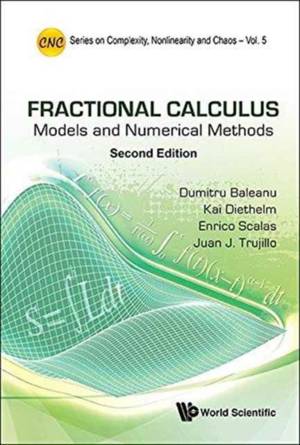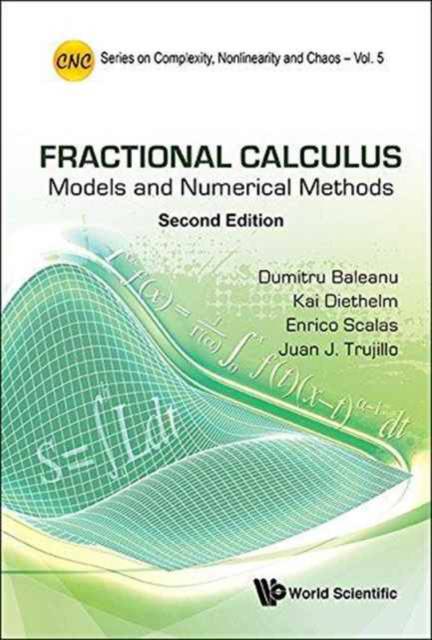
- Afhalen na 1 uur in een winkel met voorraad
- Gratis thuislevering in België vanaf € 30
- Ruim aanbod met 7 miljoen producten
- Afhalen na 1 uur in een winkel met voorraad
- Gratis thuislevering in België vanaf € 30
- Ruim aanbod met 7 miljoen producten
Zoeken
Fractional Calculus: Models and Numerical Methods (Second Edition)
Juan J Trujillo, Enrico Scalas, Kai Diethelm, Dumitru Baleanu
€ 262,95
+ 525 punten
Omschrijving
This book will give readers the possibility of finding very important mathematical tools for working with fractional models and solving fractional differential equations, such as a generalization of Stirling numbers in the framework of fractional calculus and a set of efficient numerical methods; moreover, we will introduce some applied topics, in particular fractional variational methods which are used in physics, engineering or economics. We will also discuss the relationship between semi-Markov continuous-time random walks and the space-time fractional diffusion equation, which generalizes the usual theory relating random walks to the diffusion equation. These methods can be applied in finance, to model tick-by-tick (log)-price fluctuations, in insurance theory, to study ruin, as well as in macroeconomics as prototypical growth models.All these topics are complementary to what is dealt with in existing books on fractional calculus and its applications currently existing in the market. This book will be written with a trade-off in mind between full mathematical rigor and the needs of readers coming from different applied areas of science and engineering. In particular, the numerical methods listed in the book are presented in a readily accessible way that immediately allows the readers to implement them on a computer in a programming language of their choice.The second edition of the book has been expanded and now includes a discussion of additional, newly developed numerical methods for fractional calculus and a chapter on the application of fractional calculus for modeling processes in the life sciences.
Specificaties
Betrokkenen
- Auteur(s):
- Uitgeverij:
Inhoud
- Aantal bladzijden:
- 476
- Taal:
- Engels
- Reeks:
- Reeksnummer:
- nr. 5
Eigenschappen
- Productcode (EAN):
- 9789813140035
- Verschijningsdatum:
- 17/11/2016
- Uitvoering:
- Hardcover
- Formaat:
- Genaaid
- Afmetingen:
- 155 mm x 231 mm
- Gewicht:
- 793 g

Alleen bij Standaard Boekhandel
+ 525 punten op je klantenkaart van Standaard Boekhandel
Beoordelingen
We publiceren alleen reviews die voldoen aan de voorwaarden voor reviews. Bekijk onze voorwaarden voor reviews.











